East Orange STEM Academy uses Physics to Take a Giant Leap
Download this press release
East Orange STEM Academy uses Physics to Take a Giant Leap
City High School Now Among the Top in the State for Students Enrolled in Advanced Placement Physics

Donata Nicholas, a 10th-grade science teacher at East Orange STEM Academy credits the school's physics-first approach for the dramatic increase in students taking AP courses in STEM subjects.
EAST ORANGE, NJ — April 18, 2013 — When the East Orange Campus 9 High School transformed into the East Orange STEM Academy in 2011, the goal was to push education and careers in Science, Technology, Engineering and Math (STEM).
Campus 9 — a high school serving ninth graders — had been making some progress in preparing more students for advanced placement classes.
But, now as the newly-named East Orange STEM Academy, the school is now enjoying a meteoric rise in the number of students taking AP physics. The school, reconfigured to serve grades 9-11, is seeing an incredible burst in student math and science proficiency—although teachers say they’re not surprised.
The dramatic change is attributed to the Progressive Science Initiative (PSI), developed by the non-profit New Jersey Center for Teaching and Learning (CTL). PSI, which uses free digital materials in lieu of textbooks, is a sequential overhaul of high school science instruction from biology-chemistry-physics to physics-chemistry-biology.
“We’ve made real progress since opening our doors in September 2011,” said Dr. Nicholas DelTufo, principal at East Orange STEM Academy. “We have 37 students in AP physics out of about 270 students enrolled here. We’re among the top 10 schools in the state for students completing AP physics by the time they graduate. We are a shining star in urban education.”
Critical to STEM’s success, DelTufo said, is to create more physics teachers by cultivating and certifying already skilled, qualified teachers—a key PSI component.
CTL received early funding from Bayer HealthCare to carry out the physics endorsement program with two of the school’s STEM teachers, and then train other teachers how to teach AP physics.
“As a science- and research-based company with major businesses in health care, nutrition and innovative materials, Bayer has a strong stake in helping to improve science education and to insure that all individuals are scientifically literate,” said Alexandra Borchard, Global Communications Manager at Bayer Consumer Care.
“A nation’s economic prosperity depends on scientific and technology advancements and a scientifically literate workforce. We believe what is good for our nation must be addressed in our local community,” she added.
DelTufo agreed: “We needed more physics teachers for our school, and through PSI and the New Jersey Department of Education, we’ve been able to certify our own physics teachers.
“Finding new physics and chemistry teachers is very difficult, but to be able to cultivate those teachers in-house is truly beneficial. They’re doing well teaching the course—PSI works,” he said.
CTL Executive Director Dr. Robert Goodman agreed, saying the state needs to create a large number of new physics teachers to provide the quality education our children need to compete. “We would need to create about three times as many new physics teachers as currently exist if all students are to take physics,” he said. “And all students should be taking physics.”
Creating a larger pool of physics teachers statewide is critical to achieving the sequential overhaul the CTL promotes, according to Tim Panebianco, CTL’s Director of Technology and Planning. “There aren’t enough physics teachers in the state to do the right sequence of science because we’re stuck in this traditional biology-chemistry-physics route,” he said.
“Bio doesn’t prepare students for chemistry; chemistry doesn’t prepare students for physics—it’s really the opposite. Many schools don’t know how to make this transformation so we give them the tools to do that,” Panebianco said.
But, DelTufo noted this year’s sophomores at East Orange STEM Academy are taking AP physics. They will then be enrolled in AP chemistry as juniors, as well as taking AP biology and another science elective.
“I have students who could very easily take four AP science classes by the time they graduate. That’s unheard of. Well, it was unheard of in East Orange,” he said.
Panebianco echoed DelTufo’s sentiment, adding that students graduating with four AP courses are well equipped for scholarships and are positioned to succeed in “very competitive” colleges.
“This is about planning for the future,” he said. “But to the students, it’s just about being in high school, excelling, and making the most of their academic experience as they prepare to go off into the world.”
The New Jersey Center for Teaching and Learning, founded by the New Jersey Education Association in 2006, launched the Progressive Science Initiative (PSI) and the Progressive Mathematics Initiative (PMI). CTL creates free, open-source materials to teach K-12 mathematics and high school science using interactive white boards and student polling devices. CTL works with nearly 100 districts in New Jersey, as well as districts in Colorado and Rhode Island. The material is available at www.njctl.org.
--end--
Tags: News


